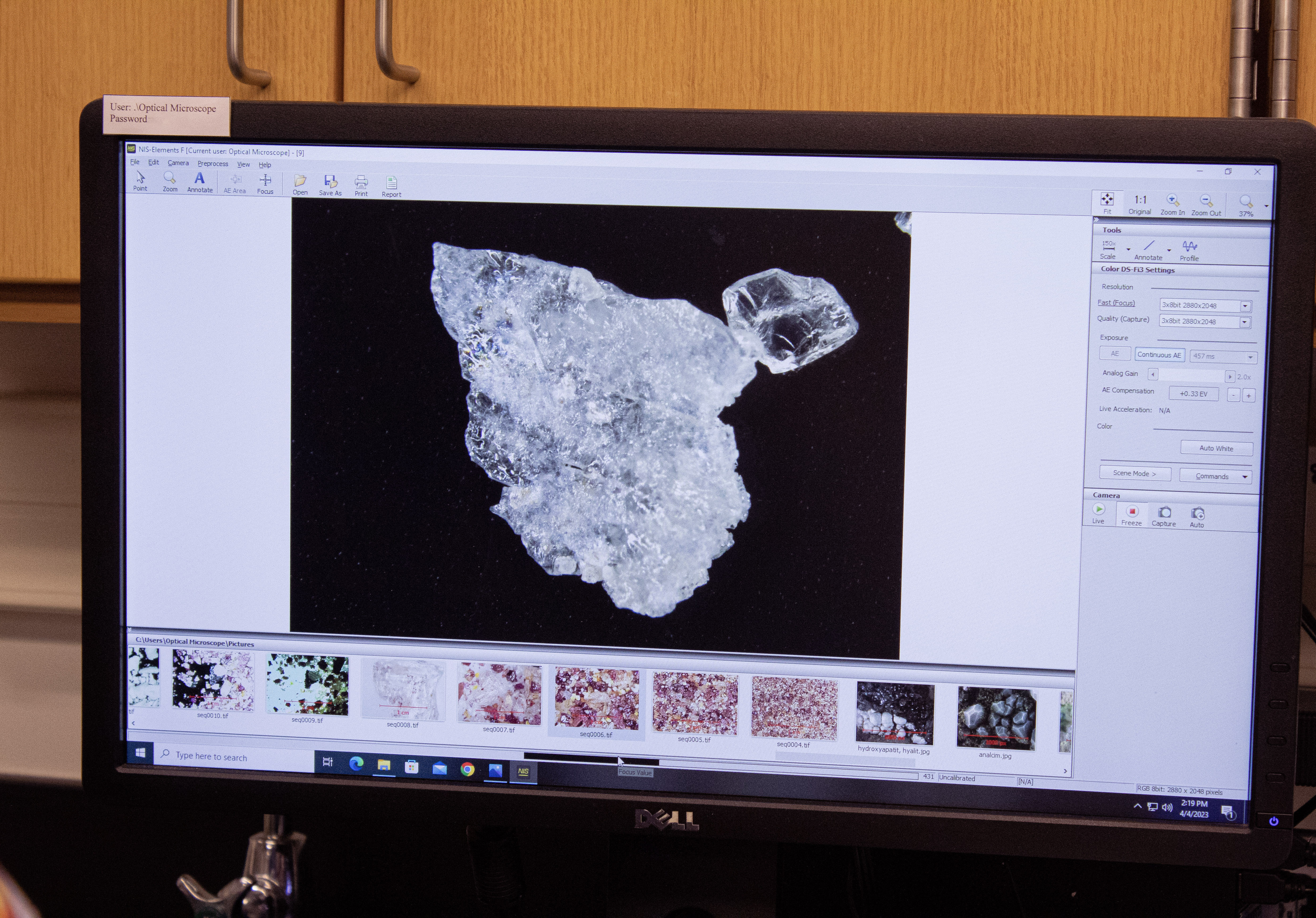
Jim Hodges, assistant professor of chemistry at Penn State, talks about his research group's broad interests in the synthesis and applications of new inorganic solids, with a particular emphasis on microporous oxides, metal chalcogenides, thermoelectrics, and heterogeneous catalysis and how these play into the important role of renewable energy technologies.
Kathryn: You were a member of the Schaak Research Group while obtaining your doctorate degree at Penn State. What was it like returning to Penn State as a member of the chemistry faculty?
Jim: I was thrilled to have the opportunity to return to State College. As an alum of the department, I was familiar with the world-class facilities and amazing people at Penn State. I knew we could succeed in this environment.
Kathryn: Did you have any specific goals or expectations when first setting up your own lab group? What qualities were you looking for in new lab members?
Jim: Our laboratory relies on several pieces of specialized equipment for our exploratory synthesis and thermoelectrics programs. At the beginning, the main goal was to get the laboratory infrastructure in place so we could install all of the new equipment.
This research requires a fair amount of hands-on work, for example trouble-shooting problems with instrumentation or maybe sealing quartz reaction vessels with a high-temperature torch. Generally, I am looking for motivated students who are curious, creative, and enjoy being in the lab.


Kathryn: What projects are you and your group currently working on? Specifically, what sort of new inorganic solids are you synthesizing and what applications will they be used for?
Jim: Broadly speaking, our group is focused on developing new materials for energy-related applications. One of our projects involves metal chalcogenides, which are a central component in thermoelectric modules that can convert wasted heat into usable electric power. It turns out that two-thirds of all generated energy is lost as wasted heat, so there is an enormous opportunity for thermoelectrics in this space. However, in order for these technologies to reach their full potential and become economically viable at a global scale, we need better materials that can deliver higher conversion efficiencies. To this end, we use our synthetic capabilities to find new metal chalcogenide materials and then study their electronic and thermal transport properties to determine if they are viable candidates.
Kathryn: Why is developing these new materials/compounds important now?
Jim: Renewable energy technologies will play an increasingly important role in our energy portfolio as we transition away from fossil fuels, but this is only part of the solution. We will also need to improve the efficiency of existing industrial and transportation processes, many of which create large amounts of wasted heat. Metal chalcogenides are a versatile class of materials that could deliver timely advances in thermoelectric waste-heat capture technologies, while also delivering new semiconductor systems for various other important applications.


Kathryn: Can you explain the significance of the relationship between chemical synthesis and thermoelectrics as it relates to your group’s research?
Jim: We use high-temperature methods (often exceeding 1000°C) to synthesize many of the thermoelectric materials we are studying. Here, elemental precursors are typically loaded into quartz tubes and then sealed under vacuum, followed by heating to temperatures above the melting point of the solid. This technique allows us to make extremely precise chemical alterations to the crystalline product, which we use as a tool for fine-tuning their electronic and thermal transport properties.
Kathryn: What important instrumentation does your group make most use of for research?
Jim: Our group uses a variety of instruments for synthesis and characterization of materials products. X-ray diffraction is a key tool for determining where atoms are in a crystal structure. We use a benchtop powder diffractometer for quickly assessing the crystalline quality of synthesized product. When we find a new compound, we use single crystal X-ray diffraction to determine the crystal structure and chemical occupancies.


Kathryn: As the new solid-state subdivision chair-elect for the ACS Division of Inorganic Chemistry, how do you plan to promote inorganic chemistry at both the undergraduate and graduate levels?
Jim: Understanding solid-state chemistry is immensely important for a chemist entering today’s world. Many of our graduates will go on to jobs in chemical industry, or graduate programs, that rely on making and characterizing solids – but these topics are often covered only briefly in the chemistry curriculum (general chemistry or inorganic chemistry). I was excited to teach Solid State Chemistry to graduate students this past spring, which is a capstone course. Surprisingly (given the historic strength of materials chemistry in our department!), this is the first time Penn State Chemistry has offered the course. I am currently adapting the course for an undergraduate offering in the Fall of 2023.
Kathryn: Lastly, where do you hope to see your lab in the next 5 years?
Jim: The most exciting part of this job is working with the students! They really drive the research and often take it in unexpected directions. It is hard to say where we will be in 5 years, but we have a great team, and I am excited to see where they take things.
